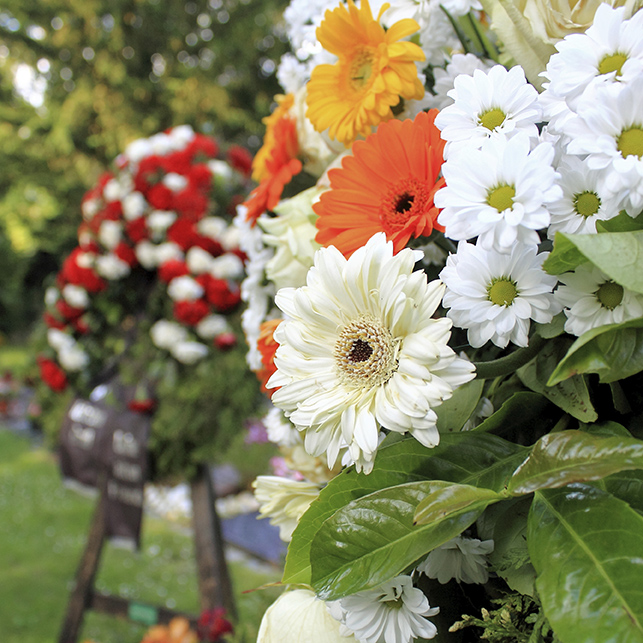
Certain arrangements should be sent to the homes of grieving family members, while others are meant for the funeral home or the gravesite.
Flowers have been used in burial proceedings since humans began burying the dead. Deeply rooted in tradition, flower choices for funerals reflect personalities as well as lend meaning and connection.
Both the type and the color of flower convey different messages as does the place you actually send the flowers. Floral arrangements sent in sympathy to a grieving family are different than the flowers sent for the funeral proper.
In Sympathy
Sympathy flowers are table-top arrangements sent to a family member's home. One of four main types of arrangements are usually sent: plants in pots or baskets, door wreaths, single orchid arrangements or bouquets in vases. These arrangements designed to be displayed around the home or the office.
Large arrangements such as wreaths and sprays are sent to the service or funeral home. This group also includes casket sprays, floor bouquets and pedestal arrangements. Funeral flowers are designed for wakes, funerals and memorials and not someone's home.
Meanings of Flowers
Roses are a common flower chosen for funerals. White roses are meant to convey consolation and well-wishes, reverence and humility. Red roses convey respect, courage and love, while pink roses signify love, grace and appreciation. Dark crimson roses denote grief and sorrow, while yellow roses are given by friends of the deceased to symbolize a strong connection. A single rose included in a bouquet signifies endearing love for the deceased.
Chrysanthemums are generally regarded as cheerful and positive in the United States, but in many European and Asian countries, these flowers are seen as expressions of grief, lamentation and death.
Carnations are popular for sympathy arrangements, since their fragrant blooms are long-lasting. Pink carnations convey gratitude, remembrance and a mother’s enduring love. This makes them a popular choice for the services for mothers and grandmothers. White carnations symbolize purity, faithfulness and innocence, while red carnations are said to express strong feelings, yearning and true love.
Lilies symbolize the innocence that has been restored to the soul of the departed. White lilies symbolize purity, stargazer lilies symbolize sympathy and oriental lilies symbolize eternal life.
Crocus blooms represent cheerfulness. They are often included in the funeral of someone who was especially lighthearted and joyful.
Daffodils and tulips are seen as symbols of renewal and fresh starts. These flowers are often chosen to send as gifts of encouragement.
An ancient tradition, flower arrangements at funerals have taken on a wide variety of meanings and nuance. Wisely chosen, flowers are an excellent way to express everything from heartfelt sympathy to deepest condolences, love and grief.





